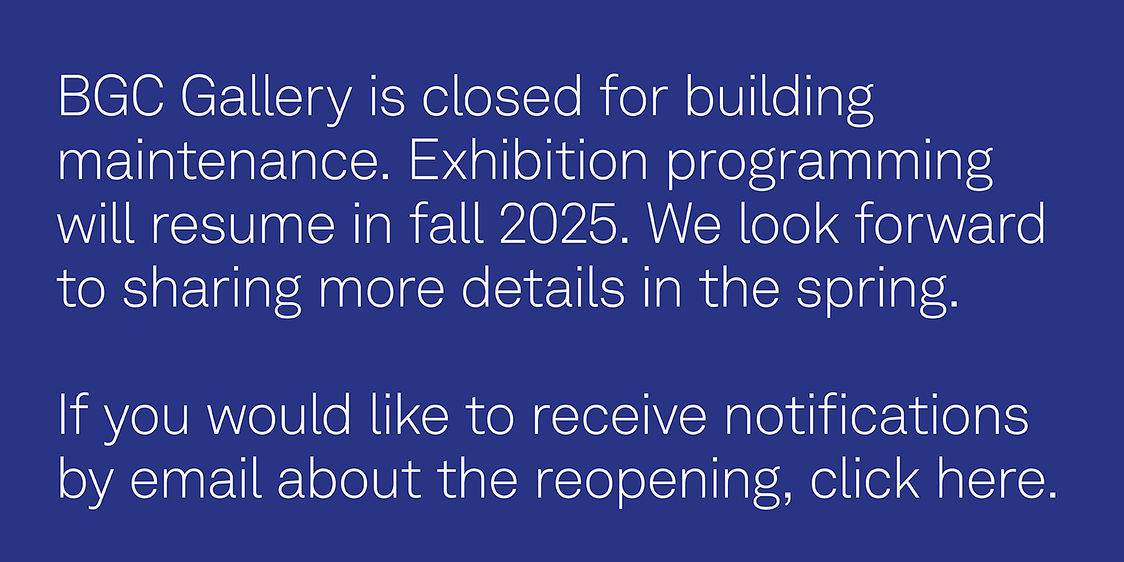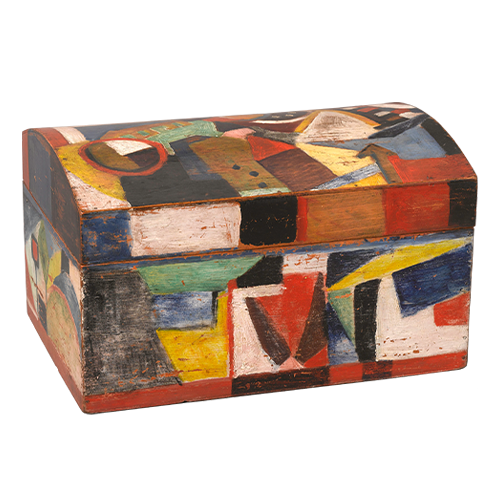“Miss Louise and Her Den of Alligators.”
Siegmund Bock (active early 20th century)
ca. 1915
Painted canvas
97 × 1361⁄2 in. (246.4 × 346.7 cm)
Circus World Museum, CWi-2654
Dan Rice
Leonard Welles Volk (1828–1895)
1863
Marble
9 1⁄4 × 24 × 27 in. (23.5 × 61 × 68.6 cm)
Hertzberg Circus Collection of the Witte Museum, San Antonio, Texas, 2003-7 G
The Circus
A. Logan
1874
Oil on canvas
241⁄4 × 381⁄4 in. (61.6 × 97.2 cm)
Whitney Museum of American Art, New York, Gift of Edgar William and Bernice Chrysler Garbisch, D.69.147
Sculpture of Standing Warrior with Spear, from “Africa” tableau wagon
1902–3
Wood carving
Workshop of Samuel Robb (1851–1928)
69 × 18 × 16 × 67 in. (175.3 × 45.8 × 40.7 × 170.2 cm)
From the Collections of The Henry Ford, Dearborn, Michigan, 31.815.1.6
Sideshow band
Frederick Whitman Glasier (1866–1950)
ca. 1905, printed 2009
Print from a glass plate negative
261⁄4 × 321⁄4 in. (66.7 × 81.9 cm)
0701
“Grand Procession of the Steam Calliope Drawn by a Team of Six Elephants in the City of New York. Now Attached to Sand’s, Nathan’s & Co.s American & English Circus.”
1858
Inscription: “Camden Monday Oct. 11th”
Color lithograph poster
Sarony, Major & Knapp, New York
301⁄2 × 401⁄2 in. (77.5 × 102.9 cm)
The New-York Historical Society
John Bill Ricketts
Gilbert Stuart (1755–1828)
1795–99
Oil on canvas
29 3⁄8 × 24 1⁄4 in.
(74.6 × 61.5 cm)
National Gallery of Art, Gift of Mrs. Robert Noyes in memory of Elisha Riggs, 1942.14.1
“Ringling Bros and Barnum & Bailey Circus” with leopard head
Studio of Norman Bel Geddes
1956
Color lithograph poster
Strobridge Lithographing Co., Cincinnati & New York
New York State Museum, Albany
The Lancer
Walt Kuhn (1880–1949)
1939
Oil on canvas
451/2 x 261/4 in. (115.57 x 66.68 cm)
Currier Museum of Art, Manchester, New Hampshire. Museum Purchase: Currier Funds, 1958.7
Cole Bros. Circus billstand on Ninth Avenue
1937
Photograph
Circus World Museum, Baraboo, Wisconsin, CWi-2317
Trunk lined with a circus broadside
Chester Ellsworth
1828
Wood, metal, leather, horse- hide, and paper
New York State Museum, Albany, H-1980.3.1
Portrait of Mr Van Amburgh, As He Appeared with His Animals at the London Theatres
Sir Edwin Henry Landseer (1802–1873)
1846–47
Oil on canvas
Yale Center for British Art, Paul Mellon Collection, B1977.14.61
“Barnum’s Collection of Curiosities.”
ca. 1864–69
Poster with woodcut illustrations
Engraved by Waters & Son, New York; printed by Thos. McIlroy & Co., New York
Shelburne Museum, Shelburne, Vermont, Gift of Harry T. Peters Sr. Family, 1959, 1959-67.114
“The Wonderful Elephant Lalla Rookh as She Appears in Dan Rices’ Great Show.”
1859
Inscription: “Worcester June 21st 1859, Monday”
Poster with woodcut illustrations, printed in three colors
Jno. E. Bacon, Printer and Engraver, New York
Courtesy American Antiquarian Society
“Resourceful girl manages to watch a man on flying trapeze and feed hot dog to escort at same time.”
Weegee (1899–1968)
April 18, 1943
Gelatin silver print
International Center of Photography, New York, Bequest of Wilma Wilcox, 1993 (7921.1993)
“New York School for Circus Arts Presents the Big Apple Circus”
Louisa Chase
1977
Cut paper 29 × 23 in. (73.7 × 58.5 cm)
Big Apple Circus
May Wirth
Harry Atwell (1879–1957)
ca. 1920
Inscription: “Best wishes from May Wirth”
Gelatin silver print
The John and Mable Ringling Museum of Art, Tibbals Collection, ht0004443
“I Am Coming”
1875/1879
Framed poster with woodcut illustrations, printed in two colors
Inset portrait of P. T. Barnum engraved by Mayes; border by Roylance & Purcell, New York
Diam. 36 in. (91.5 cm)
Hertzberg Circus Collection of the Witte Museum, San Antonio, Texas
P. T. Barnum and General Tom Thumb
Samuel Root (1819–1889) and Marcus Aurelius Root (1808–1888)
ca. 1850
Half-plate daguerreotype
Case open: 61⁄4 × 93⁄4 × 1⁄2 in. (15.4 × 24.8 × 1.3 cm); plate: 51⁄2 × 41⁄4 in. (14 × 10.8 cm)
National Portrait Gallery, Smithsonian Institution, NPG.93.154
Barnum & Bailey electric spectacular
1910
Photograph
Outdoor Advertising Association of America Archives, box OV7, John W. Hartman Center for Sales, Advertising & Marketing History, David M. Rubenstein Rare Book & Manuscript Library, Duke University, Durham, North Carolina
The Wallendas, New York
Lisette Model (1901–1983)
1945
Gelatin silver print on board
233⁄4 × 19 in. (60.3 × 48.3 cm)
International Center of Photography, Gift of Lisette Model Foundation in memory of Joseph G. Blum, 1993 (106.1993)
“Forepaugh & Sells Brothers Enormous Shows United / Madison Square Garden New York. The World Famous Metropolitan Home of These Combined Stupendous Shows.”
1900
Color lithograph poster
Strobridge Lithographing Co., Cincinnati & New York
Shelburne Museum, Shelburne, Vermont, 1959- 259.13
"The Barnum and Bailey Greatest Show on Earth," 1897. Poster, printed by the Strobridge Lithographing Company, Cincinnati. Collection of The New-York Historical Society.
The American Circus, edited by Susan Weber, Kenneth Ames, and Matthew Wittmann






























































